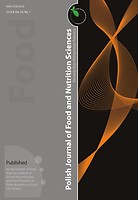
Photo from archive.org
The composition of wine and, consequently, its overall quality depends on numerous factors and their interactions. During grape ripening, signifi cant changes occur in the chemical composition of grapes where,… Click to show full abstract
The composition of wine and, consequently, its overall quality depends on numerous factors and their interactions. During grape ripening, signifi cant changes occur in the chemical composition of grapes where, primarily, increase of sugar levels along with changes in phenolic and aroma compound profi les take place. Among them, signifi cant increase of volatile thiol precursors, namely 3-S-cysteinylhexan-1-ol (Cys-3SH), 3-S-glutathionylhexan-1-ol (Glut-3SH), 4-S-cysteinyl-4-methylpentan-2-one (Cys-4MSP), and 4-S-glutathionyl-4-methylpentan-2-one (Glut-4MSP) also occur during this vine-growing phase [Jeffery, 2016; Roland et al., 2011b]. Recent investigations suggested the presence of new thiol precursors such as cysteinyl-glycine S-conjugate (CysGly) and γ-glutamyl-cysteine S-conjugate (γGluCys) [Bonnaffoux et al., 2017, 2018], as well as S-3-(hexanal)-glutathione (Glut-3SH-Al) and its bisulfi te (Glut-3SH-SO3) [Thibon et al., 2016]. Generally, these precursors are odorless compounds that undergo enzymatic cleavage during alcoholic fermentation which result in volatile thiols release. Liber-
Journal Title: Polish Journal of Food and Nutrition Sciences
Year Published: 2019
Link to full text (if available)
Share on Social Media: Sign Up to like & get
recommendations!